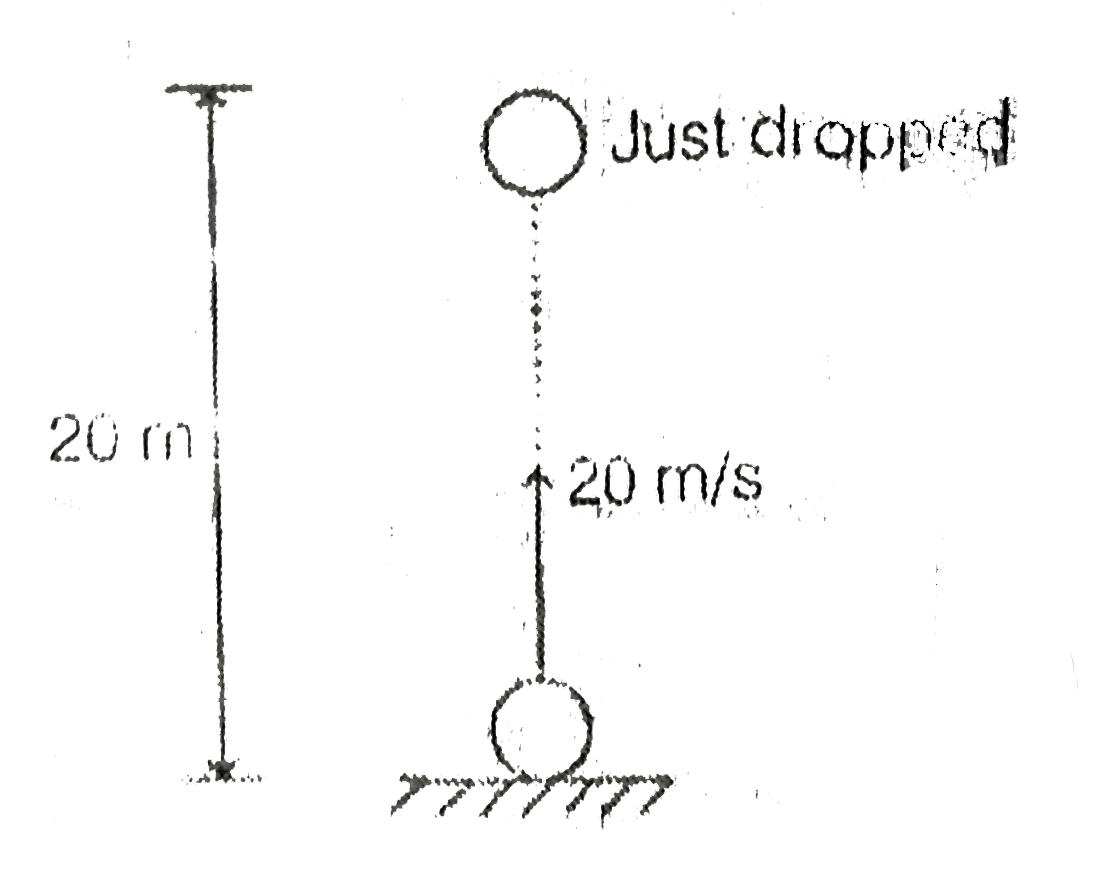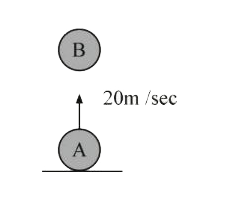Two identiacal masses are as shown in figure. One is thrown upwards with velocity 20 m/s and another is just dropped simultaneously.
The masses collide I air and stick together. After how much time the combined mass will fall to the gorund (calculate the time from the starting when the motion was started )

(1+√2)s
2√2s
(2+√2)s
None of the above
Step by step video & image solution for Two identiacal masses are as shown in figure. One is thrown upwards with velocity 20 m/s and another is just dropped simultaneously. The masses collide I air and stick together. After how much time the combined mass will fall to the gorund (calculate the time from the starting when the motion was started ) by Physics experts to help you in doubts & scoring excellent marks in Class 11 exams.
Updated on:21/07/2023Topper's Solved these Questions
- CENTRE OF MASS, IMPULSE AND MOMENTUMBOOK - DC PANDEY ENGLISHCHAPTER - CENTRE OF MASS, IMPULSE AND MOMENTUMEXERCISE - More a than one option is Correct
1 Videos
- CENTRE OF MASSBOOK - DC PANDEY ENGLISHCHAPTER - CENTRE OF MASSEXERCISE - Medical entrances gallery
27 Videos
- CENTRE OF MASS, LINEAR MOMENTUM AND COLLISIONBOOK - DC PANDEY ENGLISHCHAPTER - CENTRE OF MASS, LINEAR MOMENTUM AND COLLISIONEXERCISE - Level 2 Subjective
21 Videos
Similar Questions
Two identiacal masses are as shown in figure. One is thrown upwards with velocity 20 m/s and another is just dropped simultaneously.
In the above problem, to what maximum height (from ground) with the combined mass rise ?
View SolutionTwo identical masses are as shown in figure. One is thrown upwards with velocity 20 m/s and another is just dropped simultaneously.
If the collision between them is elastic, find the time interval between their striking with ground
View SolutionA sphere A is thrown up with velocity 20m/sec from the ground. Sphere B of same mass is dropped from a height of 80 m simultaneously, at time t = 0 so that both collide in air and stick together. Find the time (in second) after which the combined mass will fall on the ground. (Calculate from t = 0)(g=10m/sec2)

View SolutionA balloon carring a stone is moving vartically upward with velocity 12m/s. When the balloon is at height 64m, the stone is dropped. After how much time and with what velocity will it strike the ground?
View SolutionA stone is dropped freely while another thrown vertically downward with an initial velocity of 4 m/s from the same point simultaneously. The distance of separation between them will become 30 m after a time of
View SolutionA ball of mass 3 kg is thrown upwards with velocity 20 m/s. After 1 s it explodes in 2 pieces one of mass 1 kg and other or 2 kg. After explosion both the pices maintain their vertical velocities but on ground they fall 90 m aport.
Speed of both the pieces just after explosion are (both in m/s)
View SolutionA ball of mass 3 kg is thrown upwards with velocity 20 m/s. After 1 s it explodes in 2 pieces one of mass 1 kg and other or 2 kg. After explosion both the pices maintain their vertical velocities but on ground they fall 90 m aport
Energy produced (in joule) during explosion is
View SolutionTwo masses 2m and m are connected by an inextensible light string. The string is passing over a light frictionless pulley. The mass 2m is resting on a surface and mass m is hanging in air as shown in the figure. A particle of mass m strikes the mass m from below and with a velocity v0 and sticks to it. In another case a particle of mass m strikes the mass m with a velocity v) from top and sticks to it. Calculate the ratio of velocities of mass m just after collision in first and second case.
View SolutionA body of mass 4kg moving with velocity 12m/s collides with another body of mass 6kg at rest. If two bodies stick together after collision , then the loss of kinetic energy of system is
View SolutionA body of mass 4kg moving with velocity 12m/s collides with another body of mass 6kg at rest. If two bodies stick together after collision , then the loss of kinetic energy of system is
View Solution
